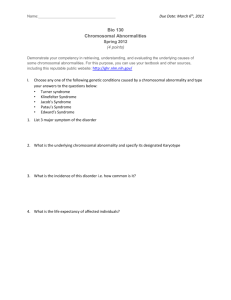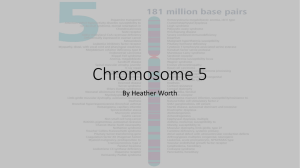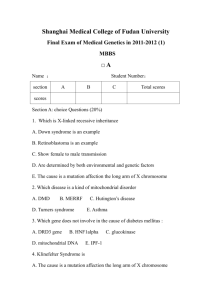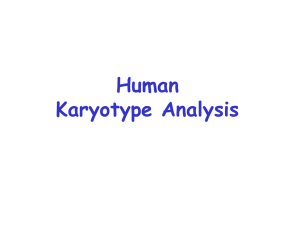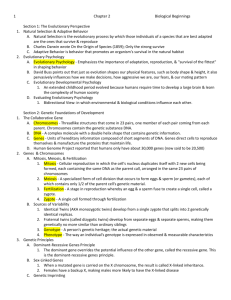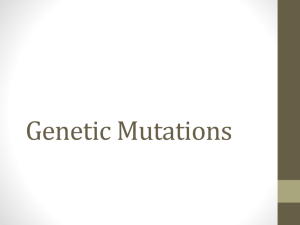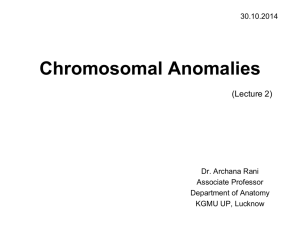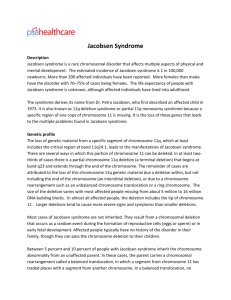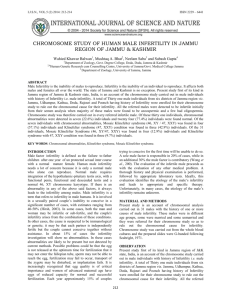File
advertisement
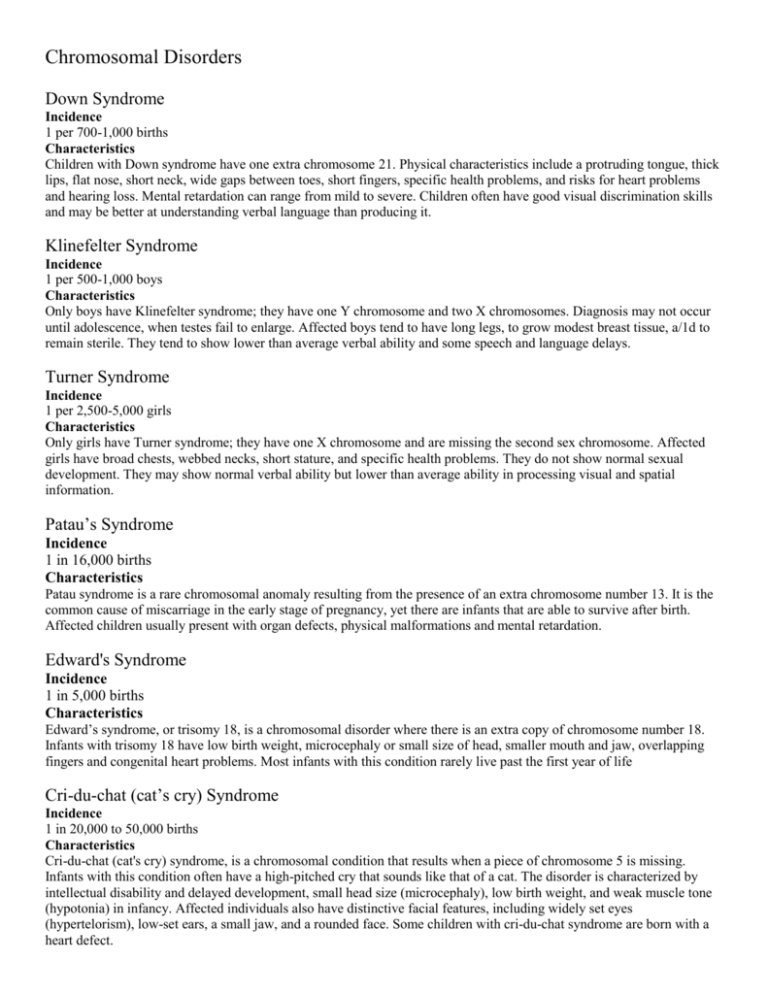
Chromosomal Disorders Down Syndrome Incidence 1 per 700-1,000 births Characteristics Children with Down syndrome have one extra chromosome 21. Physical characteristics include a protruding tongue, thick lips, flat nose, short neck, wide gaps between toes, short fingers, specific health problems, and risks for heart problems and hearing loss. Mental retardation can range from mild to severe. Children often have good visual discrimination skills and may be better at understanding verbal language than producing it. Klinefelter Syndrome Incidence 1 per 500-1,000 boys Characteristics Only boys have Klinefelter syndrome; they have one Y chromosome and two X chromosomes. Diagnosis may not occur until adolescence, when testes fail to enlarge. Affected boys tend to have long legs, to grow modest breast tissue, a/1d to remain sterile. They tend to show lower than average verbal ability and some speech and language delays. Turner Syndrome Incidence 1 per 2,500-5,000 girls Characteristics Only girls have Turner syndrome; they have one X chromosome and are missing the second sex chromosome. Affected girls have broad chests, webbed necks, short stature, and specific health problems. They do not show normal sexual development. They may show normal verbal ability but lower than average ability in processing visual and spatial information. Patau’s Syndrome Incidence 1 in 16,000 births Characteristics Patau syndrome is a rare chromosomal anomaly resulting from the presence of an extra chromosome number 13. It is the common cause of miscarriage in the early stage of pregnancy, yet there are infants that are able to survive after birth. Affected children usually present with organ defects, physical malformations and mental retardation. Edward's Syndrome Incidence 1 in 5,000 births Characteristics Edward’s syndrome, or trisomy 18, is a chromosomal disorder where there is an extra copy of chromosome number 18. Infants with trisomy 18 have low birth weight, microcephaly or small size of head, smaller mouth and jaw, overlapping fingers and congenital heart problems. Most infants with this condition rarely live past the first year of life Cri-du-chat (cat’s cry) Syndrome Incidence 1 in 20,000 to 50,000 births Characteristics Cri-du-chat (cat's cry) syndrome, is a chromosomal condition that results when a piece of chromosome 5 is missing. Infants with this condition often have a high-pitched cry that sounds like that of a cat. The disorder is characterized by intellectual disability and delayed development, small head size (microcephaly), low birth weight, and weak muscle tone (hypotonia) in infancy. Affected individuals also have distinctive facial features, including widely set eyes (hypertelorism), low-set ears, a small jaw, and a rounded face. Some children with cri-du-chat syndrome are born with a heart defect.
